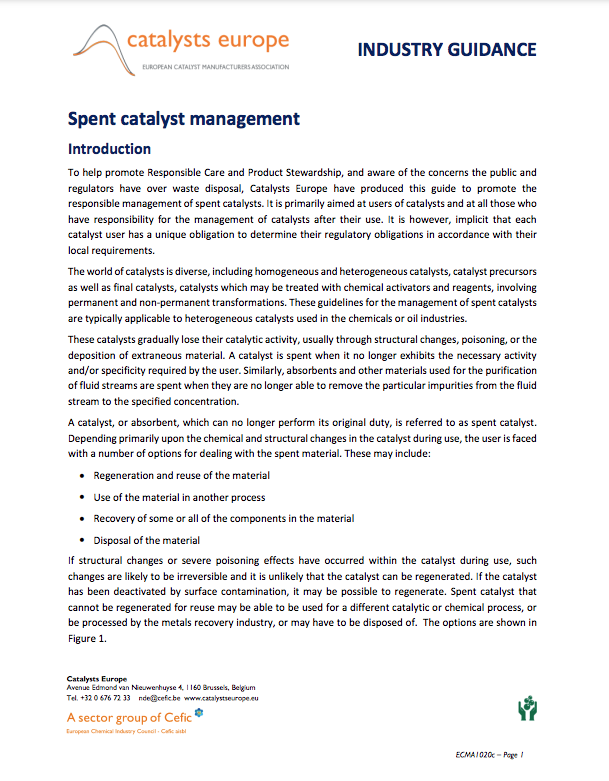Regeneration is a process to restore the catalytic activity of a spent catalyst. It normally involves thermal treatment to remove surface coatings and/or absorbed species.
If structural changes or severe poisoning effects have occurred during use, it is likely to be irreversible and it is unlikely that the catalyst can be regenerated for reuse. If the catalyst has been deactivated by surface contamination, it may be possible to regenerate the catalyst. Spent catalyst that cannot be regenerated for reuse may be able to be used for a different catalytic or chemical process, or processed by the metals recovery industry, or have to be disposed of.
Regeneration, if technically feasible, is the environmentally and economically preferred option for dealing with spent catalysts as it facilitates extended use of the catalyst, minimises the use of new raw materials, and reduces the need for ultimate recovery or disposal.


